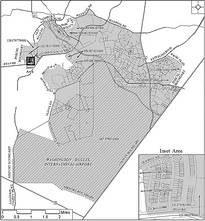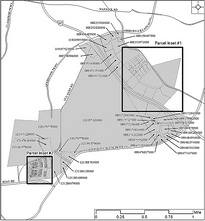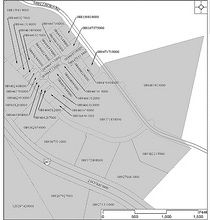During its past session, the General Assembly passed Senate Bill No. 240, which authorized a ballot question on November 6th on whether Virginia should amend its Constitution to further restrict the exercise of eminent domain. The full text of the bill, including the constitutional amendment and ballot question can be found at http://leg1.state.va.us/cgi-bin/legp504.exe?121+ful+SB240. The voters of Virginia approved the amendment by margin of 3 to 1 on November 6th.
Here is the new addition to Article I, Section 11:
That the General Assembly shall pass no law whereby private property, the right to which is fundamental, shall be damaged or taken except for public use. No private property shall be damaged or taken for public use without just compensation to the owner thereof. No more private property may be taken than necessary to achieve the stated public use. Just compensation shall be no less than the value of the property taken, lost profits and lost access, and damages to the residue caused by the taking. The terms “lost profits” and “lost access” are to be defined by the General Assembly. A public service company, public service corporation, or railroad exercises the power of eminent domain for public use when such exercise is for the authorized provision of utility, common carrier, or railroad services. In all other cases, a taking or damaging of private property is not for public use if the primary use is for private gain, private benefit, private enterprise, increasing jobs, increasing tax revenue, or economic development, except for the elimination of a public nuisance existing on the property. The condemnor bears the burden of proving that the use is public, without a presumption that it is.
Generally, Virginia’s localities and the Virginia Department of Transportation were opposed to the amendment, while the largest advocate group for the amendment is the Virginia Farm Bureau. Localities and VDOT fear that the amendment will increase the cost of acquiring land in large part because the amendment would permit landowners to recover damages for lost profits, which currently are not recoverable under existing law if they are remote and speculative. Meanwhile, the General Assembly has defined in a companion bill how lost profits are recoverable, and has also limited the recovery for “lost access” to “a material impairment of direct access to property.” This companion Senate Bill No. 437 can be found at http://leg1.state.va.us/cgi-bin/legp504.exe?121+ful+CHAP0719.
The General Assembly was very busy with eminent domain matters this last session, because they also adopted an amendment to Va. Code Ann. Sec. 1-219.1, which currently sets limits on the exercise of eminent domain, but now attempts to also exempt takings for sewer lines, roads, stormwater facilities and other facilities from the test set out in the constitutional amendment for determining whether a taking is for a public use. The text of House Bill No. 975 can be found at http://leg1.state.va.us/cgi-bin/legp504.exe?121+ful+CHAP0626.
What does all of this mean for property owners facing the threat of eminent domain? First, you can now recover lost business profits if you own the land where the business is located or, as a tenant have exclusive possession of substantially all of the land taken. The lost profits recoverable are limited to “three years from the date of valuation that is suffered as a result of the taking… ” Second, compensation is available for loss of direct access caused by a taking, but that is already available under existing law. The amendment will enshrine this element of damages in the constitution, and should clarify what type of access changes lead to damages that are constitutionally recoverable.
Third, property owners will have a greater ability to challenge whether the amount of land taken is “necessary to achieve the stated public use.” Landowners will also be able to have a court decide whether a taking is truly for a public use, with the burden on the condemning authority to establish that the use is public, as opposed to being for “private gain, private benefit, private enterprise, increasing jobs, increasing tax revenue, or economic development.” But, the General Assembly’s amendment to Va. Code Ann. Sec. 1-219.1 attempts to narrow the circumstances where public use challenges can be made.
VDOT is commencing right-of-way acquisition throughout Northern Virginia for several major projects. With this passage of the amendment, we should find out quickly how profitable “lost profit” claims will be. In future editions of Virginia’s Land Sense, our condemnation lawyers will keep you apprised of major VDOT and local projects that will lead to the exercise of eminent domain.











